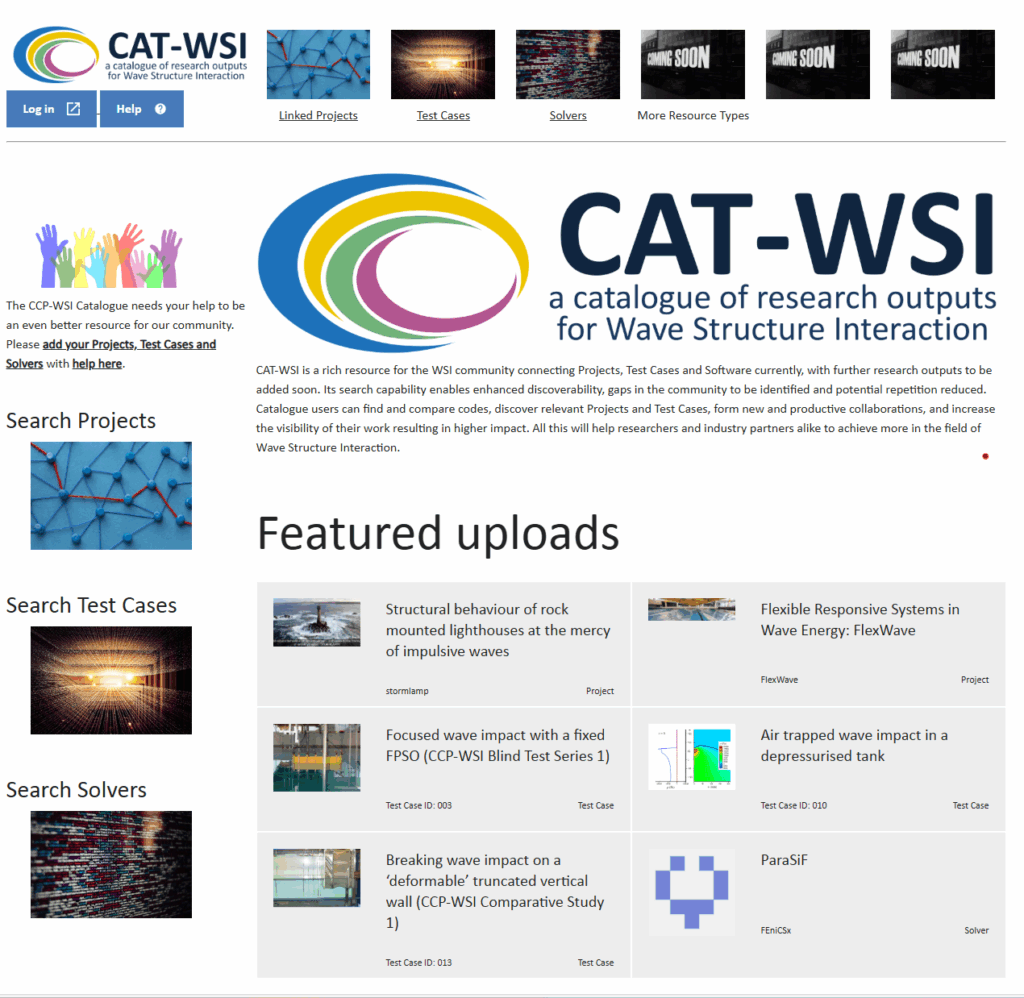CCP-WSI take the lead in developing a successful catalogue of research outputs that could pave the way to a catalogue for CoSeC
Cataloguing is an essential tool to record research outputs, such as publications, software codes, projects, and results from clinical trials. However, these outputs are often either not available to share or are shared in different places without accessible links in place to connect.
Existing cataloguing includes Web of Knowledge and institutional repositories for publications, whilst software codes can be easily shared through platforms like GitHub and US DOE CODE. The potential impact of cataloguing all research outputs in one place, such that they are FAIR (Findable, Accessible, Interoperable and Reusable) is high. The result of the application of FAIR attributes is well known and something all data, whether that data is experimental, simulated, or in the form of research outputs, should aim to adhere to.
Consequently, one of CoSeC’s research communities, CCP-WSI have developed a successful catalogue of research outputs named CAT-WSI, which is tailored to the field of Wave Structure Interactions. Fellow CoSeC community, CCP-NTH are also working on their own catalogue.

In response to the work by CCP-WSI and CCP-NTH, a high-level catalogue for CoSeC was proposed. With 25 communities covering a wide spectrum of research domains, this catalogue would not only provide a central location for all the individual CCP catalogues but also, a cross-search over the many various domains within CoSeC. Major progress in science is often made when a solution in one domain is applied to a problem in another – cross search in the CoSeC catalogue would help to identify potential collaborations and enable cross-community discovery.
A catalogue would also enhance discoverability about the valuable research conducted by the CoSeC communities and therefore be more visible to its funders, the CCP communities and the wider scientific community. The catalogue would also promote interest in CoSeC and the communities it supports, identify potential gaps in the community and prevent the risk of repeating research. The more research outputs catalogued, the more the catalogue will provide a form of horizon scanning for the many fields of research within CoSeC.
Understanding the views of the communities, before any decision was made, was pivotal. The team conducted several presentations and meetings within the communities to decipher whether there would be sufficient interest for the creation of such a catalogue. The team received very positive responses overall with all recognising that a CoSeC Catalogue would provide a practical solution to making research outputs FAIR.
Based on this direct feedback from the communities, the team recognised that adding and updating content with minimal effort would be key for the success of the catalogue in the long term. To mitigate this, the team explored the idea of automated data ingress, through use of APIs with other data holders e.g. Research Fish. This would then reduce the effort required by the CCP to review and permits the addition of any relevant domain specific metadata. For training events, the team proposed adding these to the catalogue and working together with the CoSeC Programme Office to obtain accurate domain specific metadata here as well.
As a result of the conclusions documented above, an initial prototype was produced to offer an illustration of what a CoSeC Catalogue could look like, which were presented and enthusiastically received at the CoSeC Community Forums in November 2024 and again as an update in June 2025.

CoSeC Catalogue Project Lead, Dr Gemma Poulter says:
“Cataloguing research objects across the whole of CoSeC is an ambitious and exciting project. It has the potential to be hugely impactful for both users and funders of the individual CCP communities, as well as for the CoSeC programme itself. Outcomes from the work performed on this so far are really encouraging and demonstrate the enthusiasm and commitment behind the idea. I look forward to the next phase of this project!”
CoSeC Director, Dr Stephen Longshaw adds:
“Gemma has been working on the idea of research object cataloguing for several years with the Wave Structure Interaction (CCP-WSI) community. This started from a desire to create an organised approach for complex research datasets but quickly grew when the value of creating a resource that catalogued not only data, but also other outputs became clear.
Through Gemma’s leadership, the “CAT-WSI” project has evolved into this concept of the cross-community “CoSeC Catalogue”. This offers a significant opportunity to create a FAIR structure around the diverse and hugely important domain-specific data that is curated through the communities.
Each of the communities that CoSeC supports represents an element of the UKRI Digital Research Infrastructure landscape in terms of the research software they develop and research data they curate through it. The CoSeC Catalogue offers a solution to making these outputs visible and useful not only within each community but as part of a wider and more joined up picture that is accessible across UKRI’s research domains.”